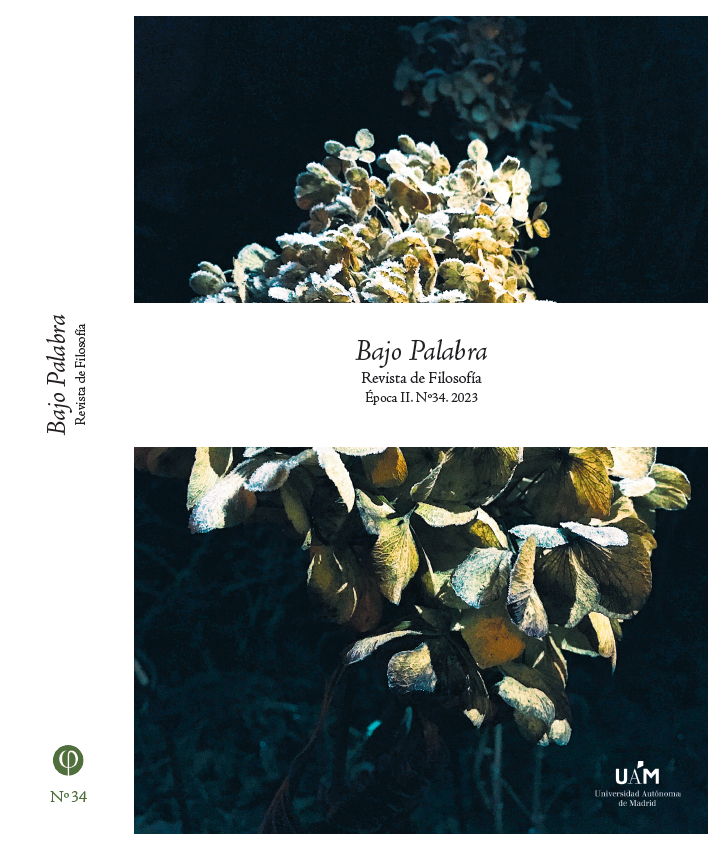Keywords:
Zambrano, natural signs, artificial signs, meanings, ecology, ethologyCopyright (c) 2023 Domingo Fernández Agis

This work is licensed under a Creative Commons Attribution 4.0 International License.
Abstract
In this work, based on the valuable contributions of Mari?a Zambrano, I intend to show that investigating the characteristics of the processes that underlie the emergence of signs, either through essential human activity or in the complex course of development of natural processes, is something of vital importance for human and animal survival. As far as we are concerned, such knowledge is essential to achieve full respect for nature and to deal fairly and consistently with the commitment to the future of humanity.
Downloads
References
De Miller, R., Robert Hainard : Précurseur de la pensée écologique, peintre et philosophe de la nature, Paris, Sang de la Terre, 2021.
Ferry, L., Le Nouvel Ordre écologique, Paris, Grasset, 1992.
Ferry, L. – Germé, C., Des animaux et des hommes, Paris, Librairie Générale Française, 1994.
Serres, M., Atlas, Madrid, Cátedra, 1995.
Shannon, C. E., “A mathematical Theory of Comunication”, The bell system technical journal, Vol. XXVII, Nº 3, July, 1948, pp. 379 – 423. DOI: https://doi. org/10.1002/j.1538-7305.1948.tb01338.x
Triglia, A., “El experimeto de Harlow y la privación materna: sustituyendo a la madre”, Psicología y Mente, 2016: https://psicologiaymente.com/psicologia/ experimento-harlow-privacion-materna
Virgilio, Geórgicas, Libro I, en Aurelio Espinosa Pólit (edit.), Virgilio en Castellano, México, Jus, 1961.
Zambrano, M., Claros del bosque, Barcelona, Seix Barral, 1986.
